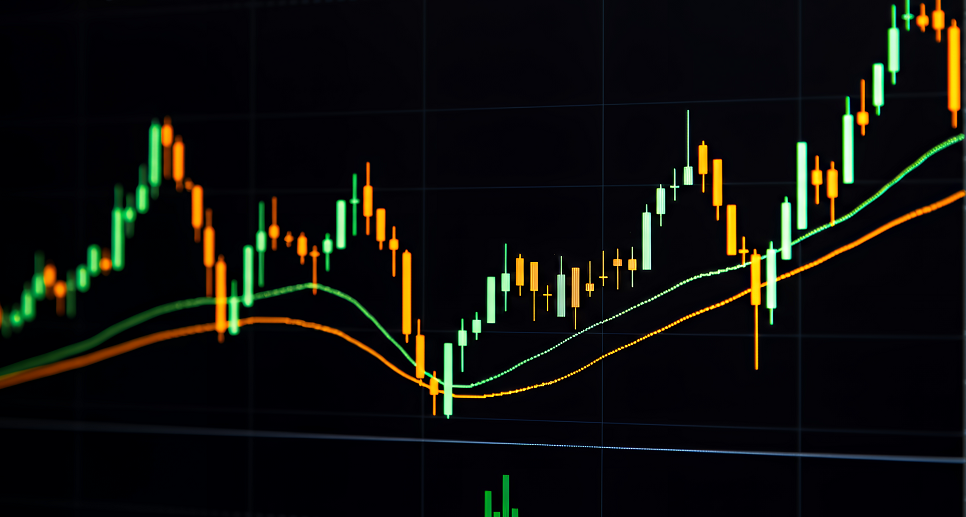IC Trading Europe Fundamental Forecast | 26 August 2025
What happened in the Asia session?
Today’s Asia session saw equities, currencies, and commodities impacted by the ongoing uncertainty around U.S. central bank actions and tariff policies, with the most pronounced moves in Japanese and Indian markets, the yen, and gold. Asian equity indices were broadly lower: the Nikkei 225 dropped over 1%, Hang Seng and Shanghai Composite weakened, and India’s Sensex and Nifty opened in the red on weak global cues. In Japan, preliminary industrial production data showed a rebound (+2.1% MoM), while retail sales growth YoY rose to 2%, contributing to market volatility in Tokyo.
What does it mean for the Europe & US sessions?
Today’s European and U.S. trading sessions are set against a backdrop of increased market volatility, driven by shifts in monetary policy expectations, political developments, and upcoming macroeconomic releases. Traders should closely monitor Fed rate cut speculation, scheduled U.S. economic data releases, and policy moves in Europe for actionable signals. U.S. President Trump’s aggressive trade/tariff actions, especially threatened tariffs on Indian and Chinese goods, are sparking caution across global markets. Friday’s Personal Consumption Expenditure (PCE) release is pivotal for the Fed’s September decision, with traders highly sensitive to inflation signals.
The Dollar Index (DXY)
Key news events today
Core durable goods orders m/m (12:30 pm GMT)
Durable goods orders m/m (12:30 pm GMT)
CB consumer confidence (2:00 pm GMT)
Richmond manufacturing index (2:00 pm GMT)
What can we expect from DXY today?
The Dollar weakened today, August 26, 2025, driven mainly by political developments as President Trump moved to oust Federal Reserve Governor Lisa Cook, raising concerns about the Fed’s independence and future monetary policy direction. A gauge of the Dollar Index (DXY) retreated around 0.3%–0.4% before paring losses, holding near support at 97.0. The general bias for the Dollar is “cautiously bearish,” with expectations that further downside is possible unless U.S. economic data unexpectedly surprises to the upside. Gold rose to around $3,363 per Troy Ounce, while major currency pairs like EUR/USD climbed to ~1.1730, showing bullish momentum due to Dollar softness.
Central Bank Notes:
- The Board of Governors of the Federal Reserve System voted unanimously to maintain the Federal Funds Rate in a target range of 4.25% to 4.50% at its meeting on July 29–30, 2025, keeping policy unchanged for the fifth consecutive meeting.
- The Committee reiterated its objective of achieving maximum employment and inflation at the rate of 2% over the longer run. While uncertainty around the economic outlook has diminished since earlier in the year, the Committee notes that challenges remain and continued vigilance is warranted.
- Policymakers remain highly attentive to risks on both sides of their dual mandate. The unemployment rate remains low, near 4.2%–4.5%, and labor market conditions are described as solid. However, inflation is still somewhat elevated, with the PCE price index at 2.6% and core inflation forecast at 3.1% for year-end 2025, up from earlier projections; tariff-related pressures are cited as a contributing factor.
- The Committee acknowledged that recent economic activity has expanded at a solid pace, with second-quarter annualized growth estimates near 2.4%. However, GDP growth for 2025 has been revised downward to 1.4% (from 1.7% projected in March), reflecting expectations of a slowdown in the coming quarters.
- In the revised Summary of Economic Projections, the unemployment rate is expected to average 4.5% in 2025, and headline PCE inflation is forecast at 3.0% for the year, with core PCE at 3.1%. Policymakers continue to anticipate that inflation will moderate gradually, with ongoing risks from tariffs and global conditions.
- The Committee reaffirmed its data-dependent and risk-aware approach to future policy decisions. Officials stated they are prepared to adjust the stance of monetary policy as appropriate if risks emerge that could impede progress toward the Fed’s goals.
- As previously outlined, the Committee continues the measured run-off of its securities holdings. The pace of balance sheet reduction, which slowed since April (monthly redemption cap on Treasury securities reduced from $25B to $5B, while holding agency MBS cap steady at $35B), was left unchanged this month to support orderly market functioning and financial conditions.
- The next meeting is scheduled for 16 to 17 September 2025.
Next 24 Hours Bias
Medium Bullish
Gold (XAU)
Key news events today
Core durable goods orders m/m (12:30 pm GMT)
Durable goods orders m/m (12:30 pm GMT)
CB consumer confidence (2:00 pm GMT)
Richmond manufacturing index (2:00 pm GMT)
What can we expect from Gold today?
Gold prices saw an upward shift today, August 26, 2025, reaching a two-week high as global markets reacted to President Donald Trump’s firing of Federal Reserve Governor Lisa Cook, which weakened the US dollar and boosted demand for safe-haven assets like gold. The principal catalyst for today’s move was Trump’s dismissal of Fed Governor Lisa Cook, raising speculation about the Fed’s independence and likely prompting expectations of more dovish U.S. monetary policy. This led to a drop in the dollar index and longer-dated Treasuries, further underpinning gold’s appeal as a hedge against market and policy uncertainty.
Next 24 Hours Bias
Weak Bearish
The Euro (EUR)
Key news events today
No major news event
What can we expect from EUR today?
Today’s Euro movement is shaped by US political risk, Fed rate cut speculation, and steady ECB policy. The Euro is modestly stronger against the dollar, but remains within a well-defined trading range pending further macroeconomic signals. The Euro has strengthened slightly against the US dollar on Tuesday, August 26, 2025, amid global financial market uncertainty and political events affecting central bank independence in the US. The next major ECB policy event is not expected until spring 2026, as the Bank opted to keep rates steady at 2.15% (main refinancing rate) and 2.00% (deposit facility) in July, with ECB President Christine Lagarde expressing cautious optimism on Eurozone growth and inflation.
Central Bank Notes:
- The Governing Council kept the three key ECB interest rates unchanged at its July 24 meeting, maintaining the main refinancing rate at 2.15%, the marginal lending facility at 2.40%, and the deposit facility at 2.00%, following eight consecutive cuts preceding this decision.
- The decision to hold rates steady was driven by evidence that inflation is stabilizing near the Governing Council’s medium-term target of 2%. Policymakers communicated that further rate moves would be data-dependent, explicitly refraining from pre-committing to any future path amid persistent global and domestic uncertainties.
- According to the latest Eurosystem staff projections, headline inflation is expected to remain around 2.0% for 2025, with projections indicating 1.6% for 2026 and a rebound to 2.0% in 2027. Downward revisions from previous forecasts primarily reflect lower energy price assumptions and a stronger euro. Inflation excluding energy and food is seen averaging 2.4% in 2025 and 1.9% in 2026–2027, little changed from prior projections.
- Real GDP growth for the Eurozone is forecast at 0.9% in 2025, 1.1% in 2026, and 1.3% in 2027. The projections note that a strong first quarter offsets a weaker outlook for the rest of 2025. While business investment and exports are dampened by ongoing trade policy uncertainties—including recent U.S. tariff measures—rising government investment, particularly in defense and infrastructure, is expected to progressively underpin growth.
- Household spending should be supported by firm real income gains and a still-solid labour market. More favorable financing conditions are expected to help strengthen the economy’s resilience to further global shocks. Wage growth, although still elevated, continues to moderate, with profit margins partially absorbing cost pressures.
- Amid significant geopolitical and economic uncertainty, the Governing Council underscored its commitment to ensuring inflation stabilises sustainably at the 2% target. The ECB reiterated it would pursue a meeting-by-meeting, data-dependent approach to its monetary policy stance.
- Future rate decisions will be guided by the assessment of incoming economic and financial data, the outlook for inflation and underlying inflation dynamics, and the effectiveness of monetary policy transmission. The Council continues to stress that it is not pre-committed to any specific rate trajectory.
- The asset purchase programme (APP) and pandemic emergency purchase programme (PEPP) portfolios are continuing to decline in an orderly and predictable way, as the Eurosystem has ceased reinvesting principal payments from maturing securities.
- The next meeting is on 11 September 2025
Next 24 Hours Bias
Weak Bearish
The Swiss Franc (CHF)
Key news events today
No major news event
What can we expect from CHF today?
The Swiss Franc today is one of cautious stability with clear downside risks from trade issues and EUR/USD volatility, but resilience in domestic economic indicators. The Swiss Franc (CHF) is trading in a highly news-driven environment today, Tuesday, August 26, 2025, with forex volatility, economic impact from US tariffs, and ongoing speculation regarding central bank intervention all shaping market sentiment. Against the US Dollar, the USD/CHF pair is trading above the key support at 0.80, with forecasts suggesting attempts to rebound upwards toward targets above 0.8285 if resistance levels are broken.
Central Bank Notes:
- The SNB eased monetary policy by lowering its key policy rate by 25 basis points, from 0.25% to 0% on 19 June 2025, marking the sixth consecutive reduction.
- Inflationary pressure has decreased further as compared to the previous quarter, decreasing from 0.3% in February to -0.1% in May, mainly attributable to lower prices in tourism and oil products.
- Compared to March, the new conditional inflation forecast is lower in the short term. In the medium term, there is hardly any change from March, putting the average annual inflation at 0.2% for 2025, 0.5% for 2026, and 0.7% for 2027.
- The global economy continued to grow at a moderate pace in the first quarter of 2025, but the global economic outlook for the coming quarters has deteriorated due to the increase in trade tensions.
- Swiss GDP growth was strong in the first quarter of 2025, but this development was largely because, as in other countries, exports to the U.S. were brought forward.
- Following the strong first quarter, growth is likely to slow again and remain rather subdued over the remainder of the year; the SNB expects GDP growth of 1% to 1.5% for 2025 as a whole, while also anticipating GDP growth of 1% to 1.5% for 2026.
- The SNB will continue to monitor the situation closely and will adjust its monetary policy if necessary to ensure inflation remains within the range consistent with price stability over the medium term.
- The next meeting is on 25 September 2025.
Next 24 Hours Bias
Medium Bearish
The Pound (GBP)
Key news events today
No major news event
What can we expect from CHF today?
The Pound is trading with slight softness against the Dollar today, yet remains resilient and broadly stable across other currencies, supported by a robust UK services sector and expectations for steady monetary policy. The British Pound (GBP) showed minor movement on Tuesday, August 26, 2025, with a modest dip against the US Dollar and an overall stable outlook across major currency pairs. The Pound gained ground recently after a UK business survey showed the strongest results in a year, mainly due to a revival in the services sector. Inflation data was hotter than expected, but mainly because of higher airfares, not broad-based pressure; this is not anticipated to impact Bank of England policy in the near term.
Central Bank Notes:
- The Bank of England’s Monetary Policy Committee (MPC) voted on 7 August 2025 by a majority (exact split likely 5–3–1 or similar, based on expectations) to cut the Bank Rate by 25 basis points to 4.00%. Multiple members supported the move, citing fragile economic growth and signs of disinflation, while others preferred a larger reduction, and at least one member voted to hold the rate steady due to concerns about persistent inflation.
- The Committee unanimously decided to continue reducing the stock of UK government bond purchases held for monetary policy purposes by £100 billion over the next 12 months, targeting a balance of £558 billion by October 2025. As of 7 August, the gilt stock stands at £590 billion.
- Disinflation has been substantial since 2023 owing to policy tightening and the fading of external shocks. However, an unexpected uptick in headline CPI inflation—to 3.6% in June—reflects pass-through from regulated prices and earlier energy price rises, as well as signs of sticky core inflation.
- Headline CPI inflation is now 3.6%, above the Bank’s 2% target, reflecting regulated and energy price effects. The Committee expects inflation to remain around this level through Q3 before resuming its downward trend into 2026.
- UK GDP growth remains weak. Business and consumer surveys point to lacklustre activity, and the labour market continues to loosen, with increasing evidence of slack. Wage growth has softened but remains above pre-pandemic norms.
- Pay growth and employment indicators have moderated further, and the Committee expects a significant slowing in pay settlements over the rest of 2025.
- Global uncertainty remains elevated, especially with rising energy prices and supply disruptions linked to conflict in the Middle East and renewed trade tensions. These factors prompt the MPC to remain vigilant in monitoring cost and wage shocks.
- The risks to inflation are considered two-sided. With the outlook for growth subdued and inflation persistence less clear, the Committee argues that a gradual and careful approach to further easing is warranted, with future policy decisions highly data-dependent.
- The Committee’s bias is still towards maintaining monetary policy at a restrictive stance until there is firmer evidence that inflation will return sustainably to the 2% target over the medium term. Further adjustments to policy will be decided on a meeting-by-meeting basis, with scrutiny of developments in demand, costs, and inflation expectations.
- The next meeting is on 18 September 2025.
Next 24 Hours Bias
Weak Bearish
The Canadian Dollar (CAD)
Key news events today
BOC Gov Macklem speaks (6:30 pm GMT)
What can we expect from CAD today?
The Canadian Dollar (CAD) on Tuesday, August 26, 2025, shows that the currency remains under pressure as the Bank of Canada (BoC) maintains its interest rate policy, and recent economic data points to softening conditions amidst global trade tensions. The Canadian Dollar’s recent stability is mostly due to synchronized interest rate pauses among major central banks, weak U.S. labor data, and expectations for easing from both the Fed and the BoC .
Near-term risks include continued tariff uncertainty, falling export demand, and domestic economic softness, with further downside possible for the CAD if support levels fail.The global trend toward weaker dollars, fluctuating commodity prices (especially oil), and signals from policymakers remain key influences on CAD direction in the coming weeks.
Central Bank Notes:
- The Bank of Canada maintained its target for the overnight rate at 2.75%, with the Bank Rate at 3% and the deposit rate at 2.70% as of July 30, marking the third consecutive meeting with rates on hold.
- The Council cited ongoing U.S. tariff adjustments and unresolved trade negotiations as driving factors for elevated economic uncertainty. The persistence of tariffs well above early-2025 levels continues to present downside risks for growth and keeps inflation expectations elevated, supporting a cautious approach to monetary easing.
- The lack of a clear U.S. policy path, plus frequent threats of additional tariffs, led the Bank to highlight risks to Canadian exports and broader demand, amplifying uncertainty about future growth.
- Canada’s economic growth in the first quarter came in at 2.2%, slightly stronger than the original forecast, while the composition of GDP growth was largely as expected. Consumption slowed from its very strong fourth-quarter pace, but continued to grow despite a large drop in consumer confidence.
- Canadian GDP growth is expected to be near 0% in Q2 2025, closely aligned with the more optimistic scenario outlined earlier in the year. Weakness in manufacturing activity—driven by both U.S. trade disruptions and sector-specific challenges like wildfires—contributed to softer output. A partial recovery is anticipated in Q3 due to rebuilding efforts and stronger retail sales in June.
- Consumer spending slowed, especially as households front-loaded durable goods purchases ahead of tariffs. Housing activity remains subdued, with resales and construction still soft despite some government tax relief measures.
- Headline CPI inflation continued to ease, holding close to 1.7% in June, aided by declines in energy prices following the removal of the fuel charge. However, the Bank’s measures of core inflation and underlying price pressures moved up further due to higher import costs from tariffs and lingering supply disruptions.
- The Governing Council reiterated that it will carefully weigh ongoing upward inflation pressure from tariffs and cost shocks against the gradual downward pull from economic weakness. While additional rate cuts remain possible, timing and scale will depend on trade policy developments and inflation’s path.
- The next meeting is on 17 September 2025.
Next 24 Hours Bias
Medium Bearish
Oil
Key news events today
API Crude Oil Stock (8:30 pm GMT)
What can we expect from Oil today?
Oil prices have slightly declined today, Tuesday, 26th August 2025, following a near 2% surge the previous session due to ongoing concerns over supply disruptions linked to the Russia-Ukraine conflict and anticipation of further U.S. sanctions on Russian oil exports. Oil prices have slightly declined today, Tuesday, 26th August 2025, following a near 2% surge the previous session due to ongoing concerns over supply disruptions linked to the Russia-Ukraine conflict and anticipation of further U.S. sanctions on Russian oil exports.
Next 24 Hours Bias
Weak Bullish




